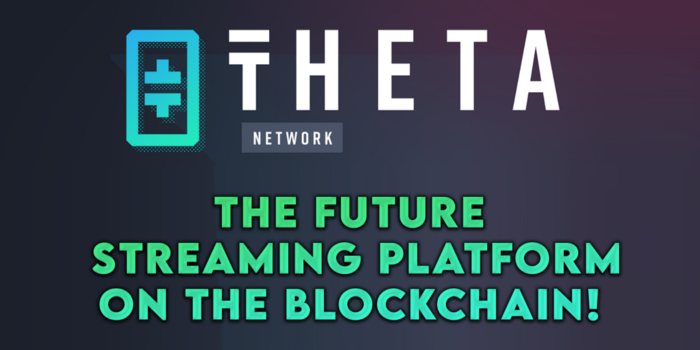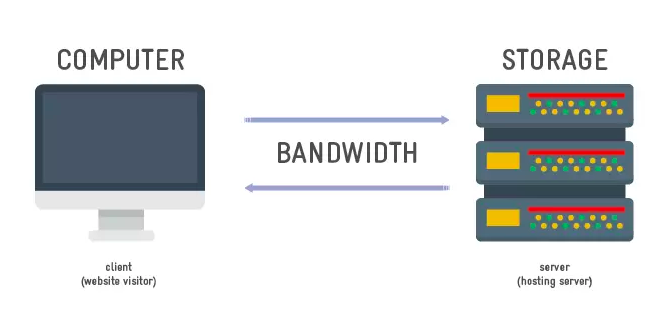摘要: There are very few platforms that compete with Twitch. Will Theta take its place?

▲圖片來源:medium.com
Video streaming is a medium that has been democratized enormously in recent years. Since 2016–2017, it has become an extremely lucrative business and industry.
Already in 2015, video streaming represented about two-thirds of Internet traffic. The undisputed leader in the streaming business is the Twitch platform.
Twitch is a streaming platform owned by Amazon, which will centralize about 70% of the content viewed live. And it’s kind of like with YouTube or in the streaming environment; Twitch is ubiquitous and has an absolute monopoly on the medium; there are very few platforms that compete with Twitch.
Except that even if Twitch is an undisputed leader in the streaming world, we have a paradox in the sense that Twitch is even a victim of its success. And it’s a platform that, even if it’s worth several billion dollars, has trouble being profitable.
For the past few years, Twitch has not been making money. According to a former Twitch employee, the biggest streamers make the platform lose money. After all, the infrastructure cost to support video delivery and a large-scale stream is not compensated by subscriptions and ads. So, it costs more to stream videos to thousands of people than it will give back to Twitch.
It’s a paradox in the sense that generally, the biggest streamers, like the most prominent YouTubers, could be with YouTube, should be the ones who bring the most money to the platform when it’s the opposite.
It’s become such a problem that the Twitch platform is considering drastically reducing streamers’ revenue to try and get their way in the story.
If you want to stream to thousands of people, you will have to use bandwidth. And bandwidth is purchased by Twitch, but bandwidth servers and bandwidth are costly. So the cost of bandwidth to deliver a stream to thousands of people every time in good quality costs more than the platform’s revenue from ad subscriptions.

The other big black spot of Twitch is that currently, users are confronted with poor image quality and slowdowns. These two problems are not specific to Twitch. They are problems that arise from all centralized streaming platforms. Except that Twitch is the one that is the most affected since it is the one with the largest audience.
The major flaw in traditional streaming services is the so-called last mile flaw. Conventional communication networks require building data centers worldwide, close to the viewers. But the problem is that because these data centers are limited in number, they are not close enough to most viewers. This will create bottlenecks in the streaming network, leading to intermittent streams and forcing companies to spend money on building new centers to support large streamers.
I like to pose a problem that the industry faces in a non-localized environment and see what Blockchain can bring here.
And that’s where Theta Network comes in because they’re going to propose an ecosystem of video services based on the Blockchain.
Theta is a network founded in 2008 by Mitch Liu and Jieyi Long, both graduates of top computer science and engineering schools and co-founders of Theta TV. They have also worked on many large-scale tech projects, and they are supported by a very comprehensive team, with about 20 people with a wide range of skills and qualifications.

Theta’s solution to the current streaming problems, which I explained to you before, is to propose a Peer to Peer network in which viewers are encouraged to share their excess computing and bandwidth in exchange for the token.

Suppose the viewers want to be rewarded in tokens. In that case, they will have to make their computing power available, which will solve the problem of the famous last mile since the players’ devices will be much closer to each other than to data centers, and distribution platforms, for example.
Thanks to this, there will be no need for many distribution centers to solve the scalability problems of traditional streaming.
The quality of viewing is optimal even for the most remote people; no need to voluntarily limit the video quality, and large streams no longer pose profitability problems, and we will not touch the revenue.
The system is well thought out in terms of scalability because the more people who use the network, the more people share their bandwidth. Theoretically, the system will create resources automatically as the demand increases. So on paper, it’s more or less close to infinite scalability.
Theta’s platform is called “Theta TV,” and it’s very similar to what we already know elsewhere, but with all the advantages of decentralization behind the curtain.
There are several types of streaming, gaming, music, chatting, and news on traditional streaming networks.
But the Theta Network is not only Theta TV; it is not only a streaming platform. The network and the protocol are open sources, which means anyone can build on the Theta Blockchain. This allows developers to continue to develop decentralized broadcast applications for their audiences, such as movies, TV channel broadcasting, music, e-sports, gaming…
And some of them have already chosen to domicile themselves only on the Theta network, like the World Poker Tour, the World Poker Championships, G Fuel, FailArmy, and many others that should arrive with the development of the platform.
The project is very ambitious; we are talking about a revolution in the streaming world. Many platforms are trying to dethrone Twitch and have been dismantled. So it’s going to be ultra-important that Theta brings answers to these problems to try to scratch a bit of Twitch’s monopoly.
So we’re going to take a look at the technological functioning of Theta to see how it will remain stable over time, remain scalable, and ensure Internet security.
The Theta blockchain uses three operating mechanisms in its protocol
- Ground breaking technology includes Multi-BFT Consensus
- Aggregated Signature Gossip Scheme
- And Resource-Oriented Micropayment Pool
As far as the Micropayment Pool is concerned, it is simply that Theta delegates the microtransactions to another network. Another entity will manage the micropayments. The web is therefore much more fluid, much less congested, and will be able to improve the scalability and speed of its blockchain.
It is widespread in Tech and Blockchain to try to delegate as much as possible on another network certain information as we can have with layer 2 with Polygon for Ethereum, for example, to try to desaturate a network as fast as possible.
Then we have the Gossip Protocol, the Aggregated signature. The same thing; it’s straightforward and not that complicated.
Remember that it’s a protocol that allows you to send information to all the nodes in the network very quickly and securely, simply by sending a sort of fingerprint of the message, which we call a signature.
We then developed Ground breaking technology, including Multi-BFT Consensus, which is the heart of Theta’s operation, and which allows thousands of nodes to participate in the network while supporting more than 1000 transactions per second.
The idea is to have a small group of nodes, just 10 to 30, produce blocks as fast as possible. Thousands of other nodes will check and verify whether the blocks generated by this small group of 10 to 30 nodes are valid. But they are still verified by a large group of nodes, which will make an attack much harder to pull off. This operating system will increase scalability while maintaining a high level of security and decentralization because the blocks will be validated very quickly, which will be much harder to corrupt.
So the decentralized nodes are the organs of Theta. It’s the anchor of the whole Blockchain and the whole Theta ecosystem, without which it clearly couldn’t exist.
There are three different nodes for the Theta network
- Enterprise Validator Nodes
- Guardian Nodes
- Edge Node
# Enterprise Validator Nodes
Enterprise Validator Nodes are nodes owned by large companies such as Google, Binance, or Samsung. They are nodes that ensure the creation of new blocks and their validation in the Blockchain. There are 23 large validators on the Theta Network, and the goal for Theta Network is to reach about 30 validators, which is quite a large number.
We remind you that it is essential to have many validators because simply if you want to hack a blockchain, you have to take control of all the validators. If you have 30 validators, it isn’t straightforward. Still, if you have between five, ten, or fifteen, as happened, for example, with Axis Infinity some time ago, it’s much easier to acquire and, therefore, corrupt the whole Blockchain.
# Guardian Nodes
Then we have Guardian Nodes; Guardian Nodes are nodes that allow checking the conformity of new blocks generated by the validators. They will act as control organs of the validator nodes that are malicious that is not functional. To become a Guardian Node, several conditions must be met: staking, connection time, and computing power.
There are currently about 3400 Guardian Nodes that control the proposed blocks.
# Edge Node
Then we have the Edge Node, which is these famous viewers will make available their computing power and bandwidth to relay video streams on the Theta network and earn rewards. This allows streaming entirely in Peer to Peer while reinforcing Theta TV and other Theta Network platforms.
Any user can become an Edge. All that is required, of course, is to have a surplus of computing power to spare. These nodes make up most of the network, with approximately 125,000 players currently making their bandwidth available.
# Tokenomics
Theta’s Tokenomics is a little bit special. It operates on two tokens. They use a dual token system so that the uses of each token can be separated.
- On the one hand, we have the Theta token, which is the governance token of the protocol, and it is pledged by the validator nodes and the Guardian nodes.
- Then we have the TFuel, the Theta Fuel, a GAS token used for operations on the network such as interaction with Smart Contracts… It will be used to reward the Edges of the network. It will reward the Edge Nodes, i.e., the users who make their bandwidth available, and the Guardian Nodes. This token is also used for streamers, whether for donations or advertising.
Theta is currently around $1.10 with a MarketCap of 1.1 billion and an ATH of $14.
It has been in the Top 50 ranking for a while, it is around the 49 48 ᵉ spots currently, and it is a token that is backed by big names in the tech industry.
轉貼自Source: medium.com
若喜歡本文,請關注我們的臉書 Please Like our Facebook Page: Big Data In Finance


留下你的回應
以訪客張貼回應